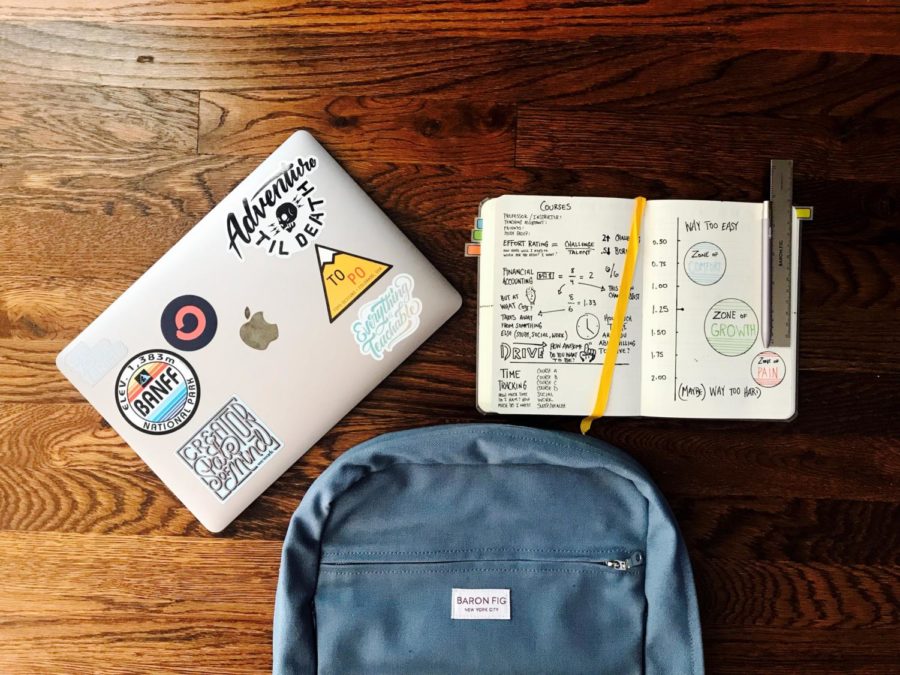Study tips from Sherlock Holmes to ace midterms using the loci method
March 9, 2021
Sherlock Holmes, a fictional character modeled after author Arthur Conan Doyle’s professor Dr. Joseph Bell, was a successful detective who used the mind palace memory technique. Research shows the technique is effective for recalling information because it involves retrieval, a key component in memorization. This method can be used to study for midterms.
According to an article written for the National Center for Biotechnology Information, the mind palace technique has helped to improve test scores and increase student confidence. Outside of college campuses, the recall technique is commonly used by memory contest champions such as Ron White, who is a two-time U.S. memory champion. The mind palace memory technique is most effective for retaining mass quantities of information in a particular order.
Though this method was popularized by the modern representation of the fictional character Sherlock Holmes, the method of loci was invented by the Greek poet Simonides. According to Cicero, Simonides, a Roman statesman, invented the memory technique when a banquet hall, where he performed at, collapsed and rendered diners unidentifiable. He managed to identify corpses by tapping into his memory about where each banqueter sat and allowed for many to be properly buried.
Jason C.K. Chan, associate professor of psychology and director of the cognitive psychology graduate program, said if he wanted to use the method of loci, he would choose to picture a location he knows very well to associate words with that specific place.
“It usually helps if you think of bizarre imagery,” he said. “… Things that are distinctive are easier to remember.”
He said this works because of the “context effect”: the idea that individuals have a difficult time distinguishing between groups of things that are similar and an easier time identifying the differences.
He used his home in his example and forms imagery relating to each of these key points. He placed each of these visualized points along a path throughout his home. For short-term memory, he sees himself sitting in a chair in the living room. For long-term memory, he sees a tall basketball player reaching up. For education, he sees his daughter studying at the kitchen table and, for the court of law, he sees a blindfolded sculpture of a woman holding a scale on his stove.
“If you have 10 flowers in front of you, and all of them are red and one of them is white, you’ll pick out the white one,” he said.
According to Chan, the method of loci is recommended for recalling items in a specific order.
He said the technique works best for remembering things in lists.
“It’s effortful, [and] it takes a lot of imagination, but once you master the technique, you can remember a lot of information,” Chan said.
There are several reasons why the method of loci works so well as a memory technique. Chan said the technique succeeds because it combines visualization and retrieval.
“Some of the reasons why the ‘Sherlock Holmes’ method works is because it involves two major techniques in memory: … one is imagery and the other is retrieval, which is testing yourself,” he said.
He also said with retrieval, an individual has to constantly recover information, which enforces the memory in a person’s brain.
“One other thing is you are taking new information [and] putting it into context of something that is well-known,” he said.
However, the method of loci is not a cure-all for studying. Because of its emphasis on order rather than big picture topics, it often falls short for concepts that require an extra element of depth.
In preparation for midterms, Chan recommended students should, regardless of the form of assessment, study for essay tests. He explained memories are retained more effectively with retrieval than with repetition. Short-essay tests, as opposed to multiple-choice tests, force students to prioritize important concepts. By focusing on the main ideas of a subject, students employ key methods of learning and retrieval.
He said students who expect short-essay tests and receive multiple-choice tests instead do significantly better than students who expect multiple-choice tests and receive short-essay exams.
He added that research shows students who take notes with pen and paper often remember things better as opposed to those who type notes on their computers.
“When [students] write by hand, they try to condense the information, organize the information in their mind, and write down what’s important … that process is a learning process itself,” he said.
Regardless of information, he said retention has more to do with how students study, and students should study for exams “effortfully,” with the “big picture” in mind.
If students want to use the memory palace technique, all they need to do is practice. For beginners, it is recommended to start with a small number of landmarks in an incredibly familiar area. Ten is a common starting number, though one can adjust the number to their comfort level.
When traveling through the “mind palace,” one should always place symbols on the landmarks in the same order. The first item should always go on the first landmark, and the 10th item should go on the 10th landmark.
For practice, many beginners start with a deck of cards, although for those without playing cards handy, it works just as well for imaginary grocery lists. For extra practice, experts recommend flipping the script by traveling through the mind palace backward. For example, if a person usually starts at a doorway and ends in their bedroom, they should start in their bedroom and travel to the doorway.
For those who are interested in learning more about the method of loci, Chan recommends a book called “Moonwalking with Einstein” written by Joshua Foer. The book features Foer’s journey with memorization and how he went on to set a record in speed cards.







